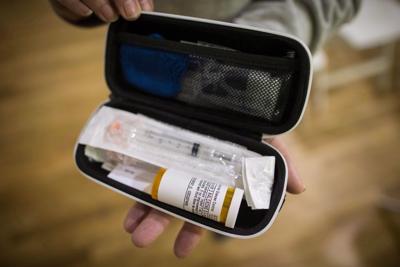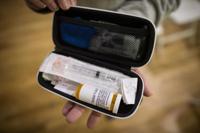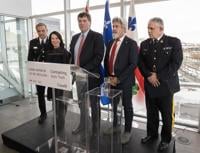VICTORIA - There were several points at which a University of Victoria student could have been saved before she died of a drug overdose last year -- but instead a report says she didn't get the naloxone or respiratory support needed to survive.Â
The report by former Abbotsford, B.C., police chief Bob Rich looks into the January 2024 overdose death of 18-year-old Sidney McIntyre-Starko, who used street drugs laced with fentanyl with two other students in a university residence.Â
A timeline in the report released on Thursday says the teen collapsed and had a seizure, but didn't get the help she needed for 15 minutes, partly because a student she was with insisted they hadn't taken drugs, and the university's security guards didn't check for signs of an overdose.Â
“There were choices and mistakes made throughout the evening that ultimately led to Sidney’s death. No one wanted what happened to occur, but it did," the report says.Â
"The only way forward is to look hard at what happened and learn by putting in place more training, rigorous processes, and safeguards so this tragedy is not repeated.”
The timeline says the teen collapsed at 6:30 that night, but it was 6:45 p.m. before a security officer questioned the student with McIntyre-Starko again and discovered  that there was "a high probability they took something.”
Another of the three students also collapsed, but survived after being given nasal naloxone.Â
McIntyre-Starko was transferred to hospital minutes after being given naloxone and was placed on life support within the hour.
"If the security officers had been told when they arrived that the two students had taken drugs, they would have immediately administered naloxone," the report says.Â
But it says that unlike other witnesses, the officers didn't see the two students had turned blue, they didn't check to see if either student had pinpoint pupils indicating an overdose, and the emergency dispatcher didn't explain to them how to determine if the students were breathing properly.Â
"Like many tragic events, there were several points where, had the response been different, Sidney likely would not have died. Once Sidney had overdosed on an opioid, the outcome of these factors led to Sidney not getting the respiratory support and/or naloxone she needed soon enough to save her life," Rich's report says.Â
It says the university thought safeguards were in place, since security had naloxone and had been trained to use it. Students were given harm-reduction supplies and processes were set for critical incidents, but what happened that day shows the processes "did not meet the moment."Â
A BC Coroners inquest has also been called into the teen's death and the BC Post-Secondary Overdose Prevention and Response Steering Committee has launched a review of its policies to find gaps and recommend best practices in overdose prevention at public post-secondary institutions.
University president Kevin Hall says they accept the report's 18 recommendations, that include mental health support for staff and students, having a staff member who can apply basic first aid in residences, and bringing in an amnesty policy for those calling for help from getting in trouble.Â
"We’ve made progress towards the commitments we’ve already set, including commissioning this report, installing nasal naloxone kits across campus, and working with emergency responders to improve wayfinding signage," a statement from Hall says.Â
"We still have work to do. This will take time, and we’re committed to the work ahead."Â
The report says senior staff initially believed that there were no significant delays in getting the students the help they needed. But once they met with McIntyre-Starko's family, it was clear the university needed to know exactly what happened.Â
"The university, recognizing that the response to the incident was not the response that should have occurred, decided to commission an external review and make that review public," the report says.Â
This report by ´şÉ«Ö±˛Ąwas first published April 3, 2025.Â








































